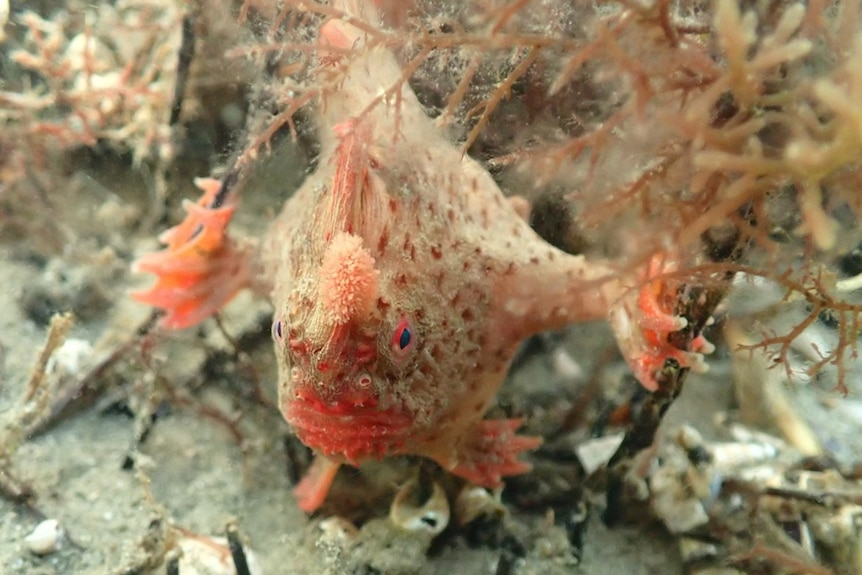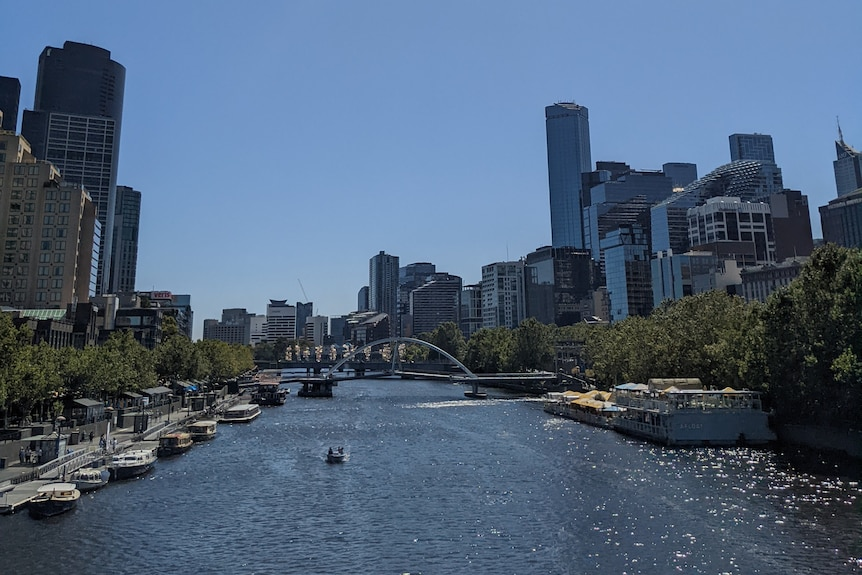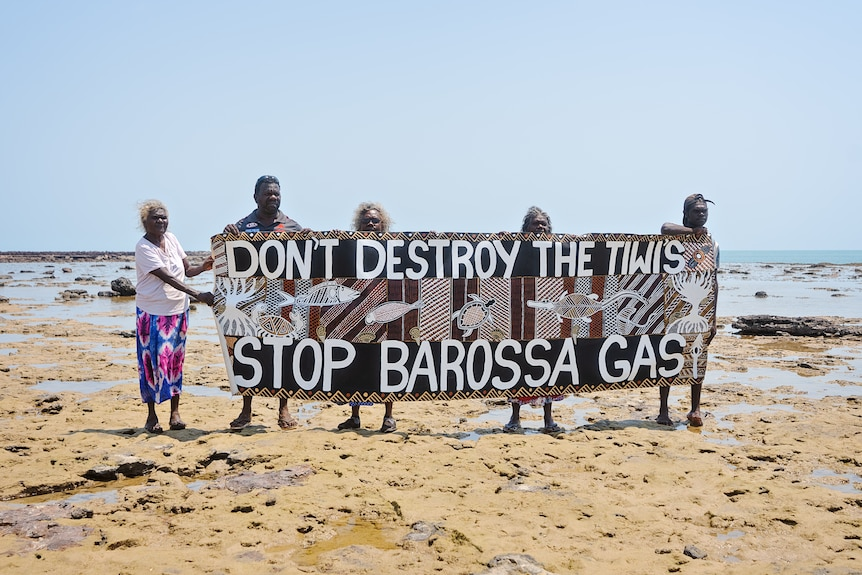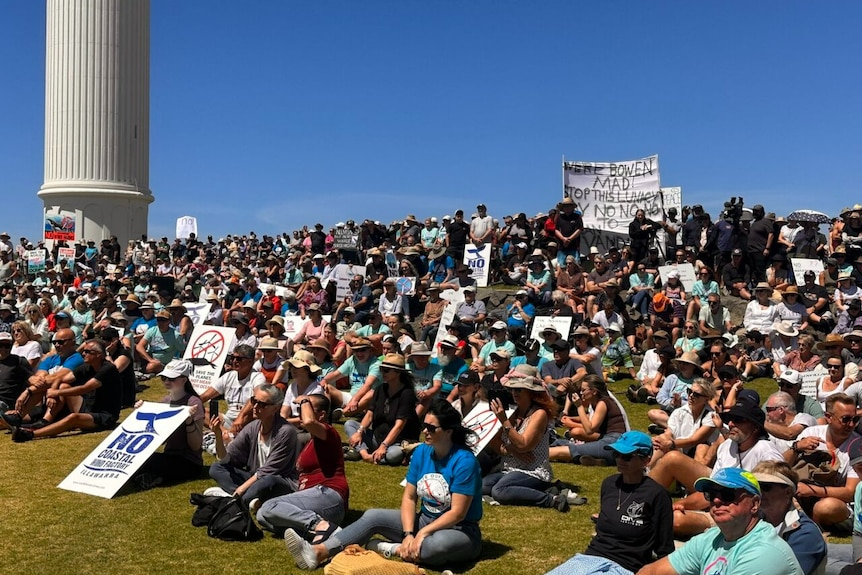Australia's year ahead in climate and environment — the good, the bad and the controversial
Just like previous summers, this one has brought fire and floods to Australia, with both lives and homes lost in the devastation.
2024 has barely started and extreme weather events such as heatwaves and cyclones are in the headlines. .
As governments move to address climate change, which brings with it more intense rainfall, longer bushfire seasons and declining biodiversity, here are five of the big climate and environment issues to keep your eye on in 2024.
Global mass bleaching
Last year Caribbean reefs experienced historically high marine heat stress and much earlier (around 1 to 2 months) than previous records of hot spells.
This impacted multiple places including Florida in the United States where an unprecedented heat event hit coral reefs, according to the country's National Oceanic and Atmospheric Administration.
There are indications these conditions could now shift to the Indo-Pacific in 2024.
YOUTUBEBleached corals at Cheeca Rocks in Florida
University of Queensland climatologist Ove Hoegh-Guldberg was the lead author on a recent paper in Science predicting challenging conditions in a second year of El Niño.
He said based on historical data, the marine heatwaves we saw last year were a likely precursor for a mass bleaching event at a global scale.
"Basically, in the next 18 to 24 months we'll see bleaching on the scale we haven't seen before," he said.
"Lots of corals are suffering yes, but this will be off the dial.
"This will really push some of the world's most beautiful and diverse ecosystems right to the brink."
But corals aren't the only species in danger from marine heatwaves.
In Tasmania the government is in the middle of an emergency intervention to take a quarter of the known red handfish population out of the ocean.

There are thought to be only 50 to 100 of the critically endangered red handfish left in the wild.(IMAS: Rick Stuart-Smith)
This is because of fears hot conditions could wipe out the last of the critically endangered fish which have been under threat because of habitat loss.
Scientists at the Institute for Marine and Antarctic Studies in Tasmania believe this is the first time the organisation has been involved in a marine emergency intervention because of climate change impacts.
h-Guldberg said the underlying phenomenon behind the heatwaves around the world was rising sea temperatures.
But he said there could also be solutions involving the ocean that could reduce emissions like offshore wind and floating solar.
"We are facing confronting times but at the same token, there's huge opportunities to fix the problem without waiting for something really innovative to come," Professor Hoegh-Guldberg said.
First Nations water rights
In a drying climate, the question of who has control over Australia's water is continuing to evolve.
There are several developments in water policy that could see greater rights go to Traditional Owners this year.
The federal government's current focus is on the Murray Basin, with legislation passed at the end of last year to make sure management of the basin takes into account the "spiritual, cultural, environmental, social and economic matters relevant to Indigenous people".
The legislation came with a promise to set aside $100 million to help First Nations people participate in the water market.
This year it's anticipated we'll see progression on another federal promise to bring in new water holding arrangements for Aboriginal people.
About 40 per cent of land in Australia comes under Native Title but the rights do not extend to the water within those determination areas, so less than 0.2 per cent of surface water entitlements are held by First Nations groups.

A section of the Birrarung, also known as the Yarra River, is recognised as a living entity by Victorian law and more rivers in the state could soon follow suit.(ABC News: Yara Murray-Atfield)
University of Melbourne water law and policy expert Erin O'Donnell said water values for Traditional Owners have been recognised in more legislation around Australia, with Victoria leading the way by taking a different approach to how rivers are seen, understood and cared for.
Six years ago Victoria recognised the Birrarung (Yarra River) as a living entity and it is still the only Australian river to be given this status.
It's anticipated there will be a discussion paper released this year by the Victorian government looking at how other water bodies in the state could be recognised as "living entities".
"Fundamentally it's a recognition of Traditional Owner law in relation to rivers, rivers are ancestral beings, they are living beings with whom Traditional Owners are in a relationship with of reciprocity and mutual obligation," Dr O'Donnell said.
Greenwashing and resource claims
Australia has the second most climate-related legal actions in the world after the US and plenty more cases are likely to be filed this year.
Regulators like Australian Securities and Investments Commission (ASIC) are predicting a continued targeting of "greenwashing", which is when a company makes misleading statements about its environmental or sustainability credentials.
University of Melbourne Sustainable Finance Hub research fellow Rebekkah Markey-Towler said the judgement of the first major greenwashing case between ASIC and Mercer Superannuation would be a fascinating read in how penalties are calculated.
Mercer is expected to pay an $11 million penalty for misleading statements about the sustainability of its super investment options.
There's a few other greenwashing cases to watch though.
The Australasian Centre for Corporate Responsibility has accused major gas producer Santos of making misleading statements about its net zero target and claims of "clean energy".
And Greenpeace is taking action against oil and gas multinational Woodside, alleging the company lied to the public about its climate performance and future plans.

Traditional owners on the Tiwi Islands fought Santos over plans to build a pipeline for the $6 billion Barossa gas project near the islands.( ABC News: Michael Franchi )
Santos and Woodside have been fighting court cases on multiple fronts over the past year about whether they properly consulted with Traditional Owners on the Barossa and the Scarborough gas projects in Western Australia.
Already this year Santos has prevailed in a case over whether construction of a pipeline would damage an underwater heritage site.
The pipeline in question would connect the $5.7 billion Barossa gas project, in the Timor Sea, to Darwin.
The federal government is now looking at how it can amend the approvals process to clarify consultation requirements between companies and cultural custodians after corporate concerns around legal challenges delaying projects.
There are also changes afoot to make large Australian corporations disclose climate-related financial risks on a mandatory basis from the middle of the year.
Separately, Australia's Treasury department released a policy draft this month on changes that would put a three-year freeze on litigation by any organisations, other than ASIC, over misleading climate disclosures.
Biodiversity protection
Australia has an unenviable track record when it comes to the state of its fauna and flora.
The country has lost more species of mammals in the past 200 years than anywhere else, and there are currently more than 1,900 threatened species and ecological communities.
One of the largest shake-ups of national policy to address the decline will be changes to the Environment Protection and Biodiversity Conservation Act (EPBC) set to be introduced this year.
The EPBC Act was labelled "ineffective" in a government-ordered independent review in 2020 and its refresh will include the establishment of a federal Environmental Protection Agency.

Mountain pygmy possums are just one of hundreds of threatened species found in Australia.(Supplied: Zoos Victoria)
Australia has failed its biodiversity miserably, said Euan Ritchie, a wildlife ecology professor at Deakin University.
"We need much stronger laws and those laws need to be enforced," he said.
"The other key factors are addressing the threats to biodiversity in the first place and that's ... greatly reducing land clearing and managing invasive species.
"Habitat destruction still goes under the radar despite having such a devastating impact on biodiversity."
Professor Ritchie said the other major impact on biodiversity was climate change.
The Greens have been pushing for a "climate trigger" to be included in the law which would give the environment minister of the day the power to reject carbon intensive developments that aren't in line with emission reduction targets.
But the Labor government has not adopted such a trigger and is addressing emissions through other legislation.
The nation's environment ministers are also on a deadline to come up with a plan for how the country will meet its commitment to protect 30 per cent of its land and water by 2030.
About 22 per cent of land already has some level of protection, but an additional 60 million hectares will need to be identified ahead of a major international biodiversity conference in October.
Offshore energy projects
The transition to renewable energy sources ramped up last year as consultation started on issues like where to build offshore wind turbines.
Six offshore investigation areas, chosen for their proximity to existing energy infrastructure and high winds, were revealed around the country.
This set off anti-turbine protests by residents in places like the Hunter and Illawarra regions of NSW and gave rise to misinformation about the potential impact on whales.

A protest over offshore wind turbines in Wollongong last year which saw hundreds of people attend.(ABC Illawarra: Kelly Fuller)
University of Technology Sydney Institute for Sustainable Futures research director Sven Teske said having community debate about offshore wind was pretty normal wherever the industry went.
"Germany went through the same offshore wind phase between 2002 and 2005," Dr Teske said.
"The problem is also the misinformation or no information about what’s really happening and what offshore wind means and why it is important."
As debates about the location of turbines continues through 2024, Professor Teske said a major milestone for the industry will be the likely first issuing of permits.
He said Star of the South, a project off Gippsland which could cover 20 per cent of Victoria's energy supply, was likely to be the first company to get approvals to move forward.
Professor Teske said there would need to be programs to train up a skilled workforce and a special fleet of construction vessels would need to be locked in as Australia moved towards the build phase.
"There are quite a few [vessels] in Europe booked out over many years, so they will not be able to come to Australia," he said.
"Same in the US, same in China, and basically in East Asia.
"The only option we have is to actually share a fleet with New Zealand and maybe Indonesia, but we need our own ships."








